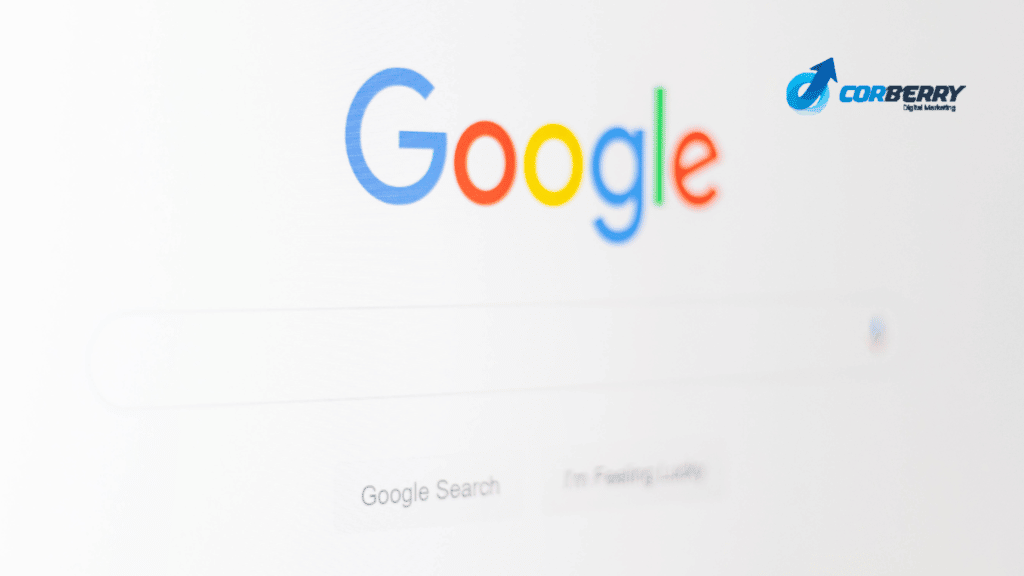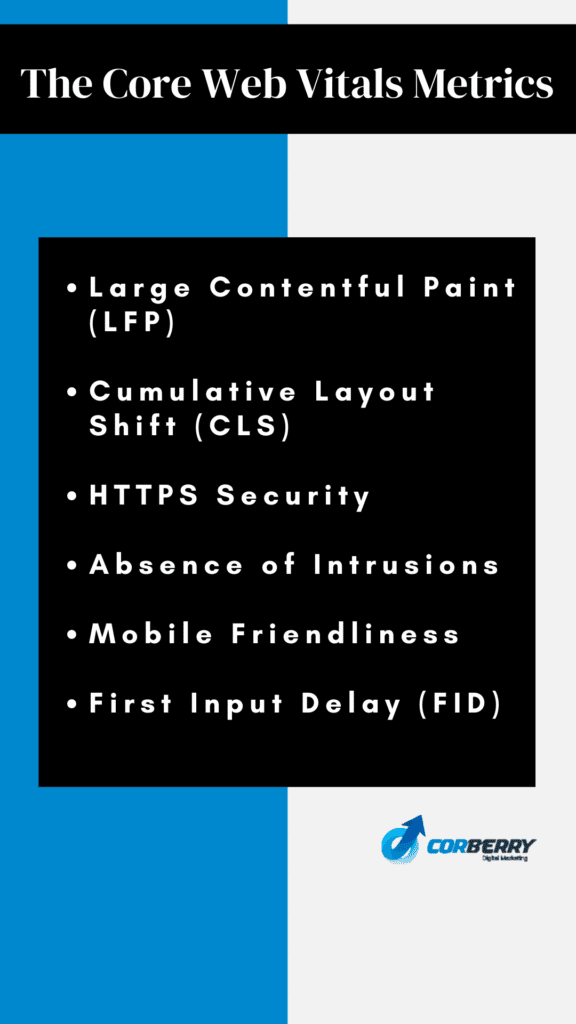
The Google page experience update is a new algorithm update that rolls out every year. Google rolled out the latest ranking signal on February 22, 2021. The core web vitals metrics were introduced in 2013 and have been a major factor in determining website search engine results since then. The updated metric version now includes more information about site speed and how fast users interact with your page on desktop browsers.
This article will focus on what is Google page experience update, its core web vitals, and ways to measure & improve your site’s page experience.
What Is Google Page Experience Update?
The Google page experience update focuses on your site’s user experience and how it matches what users are looking for. The update helps websites with better loading time, good content, and user interactivity to rank higher and get more traffic.
This is not a filter, but an algorithm that affects how your site ranks on Google search results pages (SERPs). The update uses machine learning techniques to determine how well you present information on your website.
What Are Core Web Vitals?
Core web vitals is a set of metrics that you can use to measure your website’s page experience. These reports are available in Google Analytics, and they can show you how well users are performing on the site, so you know what areas need improvement or improvement opportunities.
Core Web Vitals Helps You Understand:
How long does it take for users to get from one page to another (or from one section of your site)? This will give you an idea about how fast people are moving around your site and which pages might be causing them confusion or frustration. You can also look at this data; it will show how quickly traffic grows over time, which can help you plan future changes based on user behavior rather than using guesswork alone!
The core web vitals metrics are:
- Large Contentful Paint (LFP).
- Cumulative Layout Shift (CLS).
- HTTPS Security.
- Absence of Intrusions.
- Mobile Friendliness.
- First Input Delay (FID).

Large Contentful Paint
Google stated that the goal was to make it easier for users to find what they were looking for, while making it more intuitive for them to navigate through your content.
The first step in implementing this new design was overhauling how images were displayed on your site’s home page by replacing all images with “large contentful paint” instead of traditional HTML links or thumbnails. This change allowed you to create custom backgrounds, or paints, for any page within your site by uploading an image from your desktop or phone gallery and selecting a range of colors and fonts directly within the Builder (formerly known as Web Designer).
Simply put, LFP lets us know how much time JavaScript takes to render and execute on each page load, helping us understand how quickly we can get information onto screens.
Cumulative Layout Shift
The cumulative layout shift is a new ranking signal that measures how much a web page has changed over time. It’s calculated by measuring how long it takes for a Googlebot to download the page and then comparing it against the last time you were on that site. The cumulative layout shift is a more comprehensive metric that considers all elements in an application, so it’s more reliable than just looking at individual modules.
Here is the way this works. If you visit your website today but didn’t log in or navigate anywhere before arriving at this point (like clicking through one of our links), Google uses your most recent visit as reference information for “today.” If you’ve been back since then and logged in or navigated somewhere new, Google uses both visits together as reference points when calculating cumulative layout shift (CLS).
HTTPS Security
HTTPS is a secure version of HTTP, the protocol over which data is sent between your browser and the website you are visiting. It’s an encrypted version of HTTP that uses SSL/TLS (Secure Sockets Layer/Transport Layer Security) encryption to ensure data cannot be read by anyone else on your network.
HTTPS protects against man-in-the-middle attacks and allows users to access websites through a secure tunnel rather than directly on their device or computer.
Absence of Intrusions
The absence of intrusions is one of the most important factors in Google’s update.
With this update, Google has made sure that you can only access your account when it is needed and not at random times. This means that if someone tries to hack into your account they will be met with an error message instead of being able to view your data or send messages without any problems.
Another benefit of this update is that it ensures no spammy links on any page. This means if someone tries to trick users into clicking on something they shouldn’t, they won’t be able to do so because there won’t be anything available for them!
Related Article: 10 Factors to Consider Before Hiring SEO Companies
Mobile Friendliness
Mobile friendliness is a new feature in Google’s Page Experience Update. They allow you to see how well your site performs on mobile devices and how you can improve it.
The way that mobile-friendliness works is by tracking what happens when someone clicks on an element of your website (or any webpage). This includes links, images, and text within each page; it also includes where users click on those elements.
First Input Delay
The first input delay is the time between a user’s first input and when the page begins to react. That is when a user clicks on your website and how much time your website takes to respond to the user. The first input delay is a measure of how fast you can get your content into a page without having to wait for it. It’s measured in milliseconds (ms).
How Do You Measure Site’s Page Experience?
The page experience report in the core web vital reports is a great way to measure how well your site is performing. You can use the page experience signal, which shows you where users are clicking on your site and how well they like it. If you have a lot of traffic coming from social media platforms, like Facebook and Twitter, this signal can help you determine whether or not those sites are sending people away from your website.
For example, if some users click on an article, but don’t read it. This could mean that those people aren’t interested in reading more about whatever topic was originally clicked by them. So keep tabs on these signals so that when new content comes out, or changes happen within any given section/topic area, you’ll know right away whether things are looking up or down before you get too far into things.
The page experience report shows how fast your website loads, how many clicks it takes users to reach a particular page or landing page, and whether or not pages are responsive enough for mobile devices. This will allow webmasters to know where improvements need to be made.
The core web vitals report gives you detailed statistics about what type of data is being accessed on each page in your site’s index file (also called a sitemap). This includes size per second, number of requests, and response time from HTTP requests made by crawlers, such as Googlebot and Bing Bot. The core web vitals report helps identify potential problems, like slow load times due to heavy traffic between servers over long periods during peak hours when everyone wants information quickly.
How to Improve a Site’s Page Experience?
There are a lot of things you can do to improve your site’s page experience. Here are some tips:
Improve Site Speed
A slow-loading page is an unhappy visitor, no matter what they’re looking for. Speed up the load time in Google chrome by changing your HTTP headers, and use a CDN if possible (Cloudflare). Use a page-load time tool to measure page load times: The Page Load Time tool reports on how long it takes users to load your site from start to finish after navigating from one page of your site to another. This helps you identify bottlenecks that may be slowing down your site’s performance so you can make improvements accordingly.
Use Analytics Tools
Use an analytics reporting tool, like Google Analytics (or any other analytics platform) with their built-in feature called “Real User Monitoring” (RUM). RUM lets you see what parts of each interaction on your website are taking the longest, which gives you valuable insight into where changes need improving before they negatively affect user experience.
User-Friendly Content
Make sure that users can easily see all of your content with plenty of white space, images, and text. Make sure that scrolling is smooth and doesn’t cause jank or lag on touch devices, such as mobile phones and tablets. Also, consider using a CSS grid layout so that everything looks easy to read from left-to-right instead of top-to-bottom like most websites currently do today with just one column layout! This can help people find what they need quickly without having any trouble.
Conclusion
The main purpose of this update is to measure the overall user experience of a page. In other words, it measures how well your website loads and performs for users on different devices and browsers. This is just a little update for those of you who are not familiar with Google’s latest product, the Page Experience Update. The good news is that this update is all about improving your overall web page experience.
Frequently Asked Questions
Which websites does Google’s page experience update affect?
This new ranking signal will affect all websites that use HTML5 or HTTPS in their pages. Especially websites that don’t have flash content.
How do I find core web vitals reports on my search console?
The core web vitals report is available on all search engines that support Page Experience Optimization (PEO). You can find it by clicking on “Page Experience” at the top right corner of your account home page or selecting View > Page Experience from any page on Google Search Console.
What is the page experience signal?
The page experience signal is a new meta tag that Google uses to measure the quality of your website. It’s a signal in the core web vitals report in the search console.


